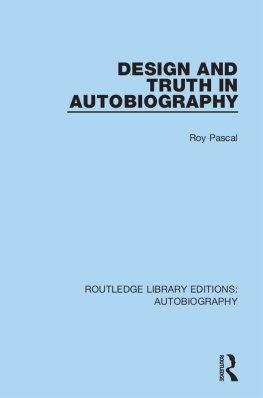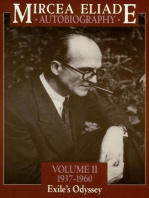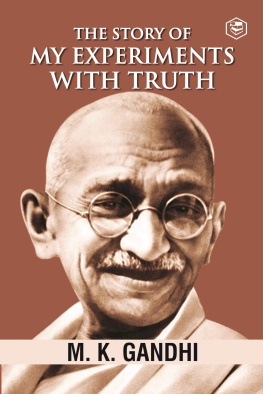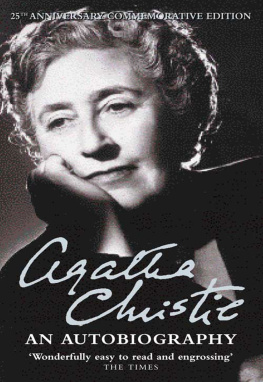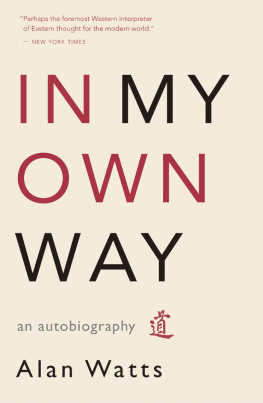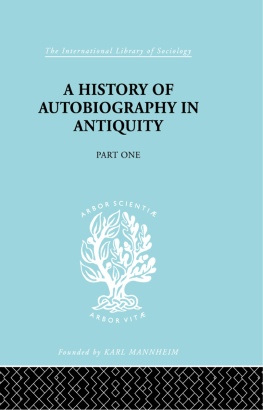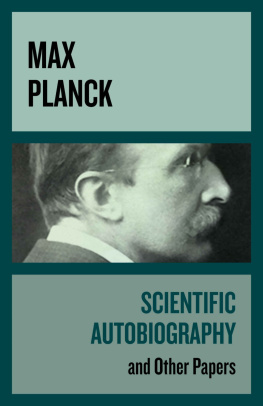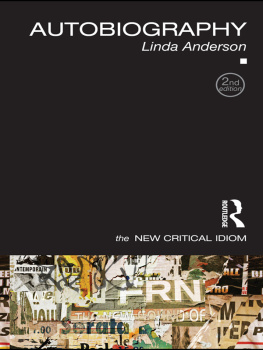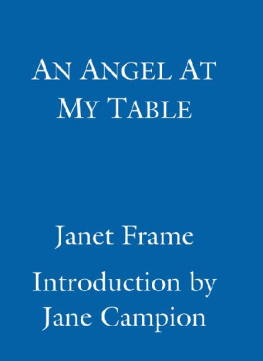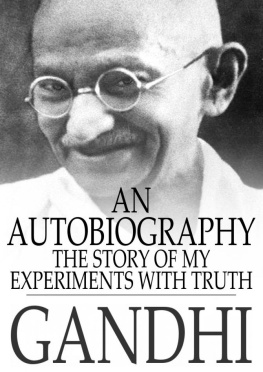
ROUTLEDGE LIBRARY EDITIONS: AUTOBIOGRAPHY
Volume 7
DESIGN AND TRUTH IN AUTOBIOGRAPHY
DESIGN AND TRUTH IN AUTOBIOGRAPHY
ROY PASCAL

First published in 1960
This edition first published in 2016
by Routledge
2 Park Square, Milton Park, Abingdon, Oxon OX14 4RN
and by Routledge
711 Third Avenue, New York, NY 10017
Routledge is an imprint of the Taylor & Francis Group, an informa business
1960 Roy Pascal
All rights reserved. No part of this book may be reprinted or reproduced or utilised in any form or by any electronic, mechanical, or other means, now known or hereafter invented, including photocopying and recording, or in any information storage or retrieval system, without permission in writing from the publishers.
Trademark notice: Product or corporate names may be trademarks or registered trademarks, and are used only for identification and explanation without intent to infringe.
British Library Cataloguing in Publication Data
A catalogue record for this book is available from the British Library
ISBN: 978-1-138-93641-6 (Set)
ISBN: 978-1-315-67463-6 (Set) (ebk)
ISBN: 978-1-138-93948-6 (Volume 7) (hbk)
ISBN: 978-1-315-67460-5 (Volume 7) (ebk)
Publishers Note
The publisher has gone to great lengths to ensure the quality of this reprint but points out that some imperfections in the original copies may be apparent.
Disclaimer
The publisher has made every effort to trace copyright holders and would welcome correspondence from those they have been unable to trace.
DESIGN AND TRUTH
IN
AUTOBIOGRAPHY
ROY PASCAL

First published 1960
by Routledge & Kegan Paul Ltd
Broadway House, 68-74 Carter Lane
London, E.C.4
Printed in Great Britain
by Page Bros (Norwich) Ltd
Roy Pascal 1960
No part of this book may be reproduced
in any form without permission from
the publisher, except for the quotation
of brief passages in criticism
Contents
I T may not be out of place to introduce this book with an autobiographical comment on how I came to undertake it.
I had spent some years in the intensive study of imaginative and philosophical literature, and was continually brought up against the problem of the contrast between the meaning of a mans work and life for us, the likeness we make, and his own image or idea of himself. We generally underestimate the importance in a mans life of his life-illusion, and I wanted to compensate this bias by studying autobiography, the record of this illusion.
Personal experiences reinforced, and perhaps in reality prompted, this purpose. I was frequently startled to find that for other people I was a person with definite characteristics, who in given circumstances could be expected to have certain views and to act in certain ways; while I remained in my own eyes rather indefinite and capable of unforeseeable reactions. I came to realise that I was deluding myself in some degree, but felt that the others were deluding themselves about me also. I am not so fixed as I appear to them, and I am not so indeterminate as I assume. Thinking over recent changes in my thoughts and habits, I found it immensely difficult to decide whether they were foreseeable, as the assertion of a deeper trend over less fundamental attitudes, or whether they were something really new. In either case, it seemed curious that I should be so anxious to persuade myself that I was consistent, that this I was an identity; for even if something new had emerged, I tried to prove to myself that it grew organically out of the old. As if freedom could mean something to me only if it was destiny, as if a choice was satisfactory only if it imposed itself as my nature.
This intellectual problem presented itself however as an insistent moral pressure. I do not mean concern for the morality of my behaviour and thoughts, though old faults and follies of course cause sleepless nights. I mean a need for meaning. I do not believe that an individual life has a religious or transcendental meaning, and I cannot even comfort myself with the metaphysical despair, the Angst, of the existentialists. Nor is it enough to prove to myself that I am fulfilling a social purpose in a useful job. The meaning had to be personal, subjective. I did not pitch my hopes extravagantly high, and felt one could be content if one could feel ones self to be consistent, to have developed naturally and organically, to have remained true to itself, and if within this framework one could order certain intense experiences whose significance defied analysis but which were peculiarly ones own. The terms are vague, and I cannot say where this pressure comes from, but I think I am delineating a state of mind from which autobiography springs.
When I tried to jot down some early experiences that seemed to insist on being expressed, I found however hindrances and problems with the apparently simplest and clearest memories. My own difficulties led me to realise how peculiar is the task of the autobiographer, and to investigate the various ways in which men and women have been able to write the truth about themselves. I was surprised to find that, though there is a huge and growing bulk of autobiographical statements, very little has been written about how the autobiographer accomplishes his task.
It was not easy to find a satisfactory form for this study. To classify autobiographies by motive is psychologically interesting, but does not lead to any decisive insight into the reasons for the specific shape or style of a workat the same time, motives are usually mixed. A historical account is of great value for the centuries when autobiography was finding itself, but is only confusing in the modern period, when autobiographies of all sorts jostle for attention. The plan I ultimately adopted was devised in order to work towards the secret of autobiography as the account of the truth of a life, and it perhaps needs a little explaining.
After defining what I understand an autobiography to be, I recount in historical chapters its emergence as a recognised and self-conscious literary form. From this point I turn to what I take to be the main issue, what is the particular sort of truth to be found in autobiography, and I first face the difficulties by enumerating the numerous ways in which autobiographies are not truthful. Even the best fall short in this respect, if they do not do worse, and yet they impress us with their truth; and I suggest that this riddle is solved if we approach them from the point of view of the authors intention, which itself is determined by his personality and achievement. They are, therefore, then examined by types, for this classification allows us to understand the principle upon which the author builds his story and the style in which he writes. Childhood falls into a category of its own and had to be treated separately. In all cases, the search for a formal principle leads to a discussion of the specific content of the book, just as the discussion of the content leads repeatedly to a problem of form.
The question imposed itself, why have many authors found it more appropriate to probe into themselves through the medium of invented circumstances, in the form of the novel? Hence a chapter on the autobiographical novel.
Next page
